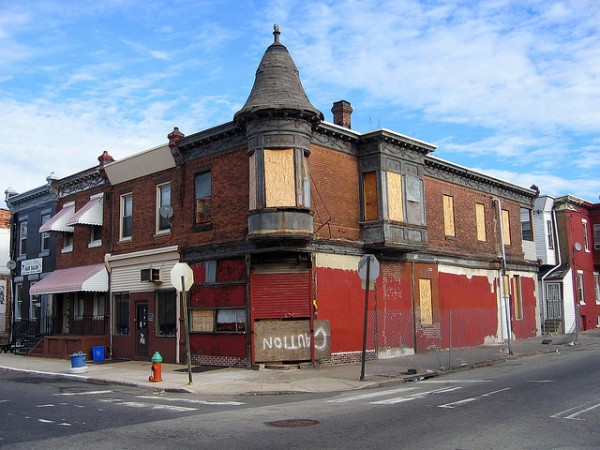Topic(s): News
State Policy and Problem Property Regulation
February 9, 2022

This report is derived from From State Capitols to City Halls, a working paper prepared by Alan Mallach pursuant to a joint program agreement between the Center for Community Progress and the Lincoln Institute of Land Policy.
Download the One-pager || Download the Full Report
The need to regulate problem properties is not really contested. Problem properties, whether a derelict vacant house or an occupied apartment building with inadequate heat and mold on the walls, are a danger to their residents and a nuisance to neighbors. They trigger severe health problems, including lead poisoning and asthma, they can do harm to nearby properties and their residents, undermine the quality of life in the neighborhood and depress property values, stealing the modest wealth of long-time homeowners. They reduce municipal tax revenues while burdening local governments with unnecessary costs for police, fire, health care, demolition, and property maintenance. They disproportionately burden low-income renters, whose limited financial resources put them at the mercy of landlords, many of whom may be financially strapped themselves.
The need for regulation arises when the property gives rise to harms to others: where the potential or actual harm is to the occupant of the property, or where the potential or actual harm is to the neighbor of the property, or the community at large.
Regulation begins with efforts to prevent harms from problem properties in the first place; to mitigate those harms when they happen; and where needed, to restore them to sound condition or productive use.
However, property regulation is not a simple matter. Property regulation affects people’s health, welfare, and quality of life in many ways. Moreover, because of the many intersections between problem properties and poverty, as well as their disproportionate impacts on communities of color, issues of racial, social, and economic equity are deeply interwoven with decisions about the ways in which problem properties are regulated.
This report that can be a resource for practitioners and policymakers at the state and local levels. It focuses on the central theme that state laws and regulations largely determine what local governments can or cannot do to regulate problem properties and is designed to be useful to people working to frame more effective strategies to deal with problem properties and work with state governments and legislatures to enact new laws and amend older ones to that end. Moreover, it should be useful locally, alerting local officials and advocates to where their city may not be using (or misusing) the tools provided by their state’s laws, or to where opportunities for creative action exist by virtue of the absence of conflicting state laws.
Elements of Problem Property Regulation
1. Laying the foundation
Relevant property information, such as registration ordinances; clearly defined, reasonable and transparent codes and standards to enforce; and the organizational framework, capacity and resources to enforce those standards.
2. Enforcing health and safety in rental housing
Having an effective regulatory program to ensure that rental properties are inspected regularly, and that all rental properties meet basic health and safety standards.
3. Addressing vacant abandoned properties
Minimizing harm while properties are vacant and getting them into responsible ownership and back to productive use.
Six Principles to Guide Sound State Policy
1. State law should grant clear and explicit authority to local government to regulate problem properties in the public interest.
2. State law should offer a diverse body of regulatory tools for use by local government to address the full range of problem conditions that may be present in the community.
3. Regulatory tools should be flexible in order to allow local government to deal effectively with conditions as they arise, up to and including provisions for taking control of properties where other efforts have been unsuccessful.
4. Regulatory tools should incorporate provisions that allow quasi-governmental entities such as land banks, qualified nonprofit entities, and residents, as appropriate, to act to resolve problem property conditions.
5. Regulatory tools should provide clear procedural standards to guide local officials, property owners, residents, and where appropriate, the courts.
6. Regulatory tools should provide for transparency and responsiveness to diverse community concerns, and actively further equity in enforcement.
Subscribe to join 14,000 community development leaders getting the latest resources from top experts on vacant property revitalization.
